A patrol or pursuit car has arguably the most demanding life of any fleet car, carrying burly officers and kilos of special equipment over tens of thousands of miles a year.
It is not unusual for motorway patrol cars to operate almost 24 hours a day and cover more than 75,000 miles a year, many of them at high speed. Moreover, every minute of downtime can affect operational policing, so parts' durability is important, as is their cost. Police fleets work to tight budgets, and police fleet managers are known to be ruthlessly efficient in selecting models that can last the course and that have a failsafe supply chain of spare parts to keep them on the road.
For these same demanding reasons, vehicle manufacturers are keen to supply police forces. Car makers believe that when it comes to vehicles, the general public are of the opinion that 'if it's good enough for the police, then it's good enough for me'.
As a result, liveried blue light cars serve as great marketing exercises for manufacturers keen to promote their vehicles as fast, hard working and durable. Police life may even add some glamour to a car brand, even though Sweeney-style chases are few and far between.
Add in the fact that police fleets operate about 25,000 vehicles in the UK, many of them on shorter replacement cycles than the fleet standard three years because of their high annual mileages, and blue light business represents a significant commercial opportunity for manufacturers.
But it is not a market that can be served through ordinary fleet channels, a fact recognised by the specialist sales staff at many vehicle manufacturers, and clearly evident at the National Association of Police Fleet Managers exhibition held in Swindon, Wiltshire.
As one exhibitor pointed out – police fleets demand a high level of service so manufacturers winning fleet business are viewed favourably for their commitment to customer satisfaction. Among new cars on display in full police livery at the exhibition were the new Vauxhall Vectra and the Ford Fiesta.
Other manufacturers with stands at the show included BMW, Honda, Mercedes-Benz, Mitsubishi, Nissan, Peugeot, Renault, Volkswagen Commercial Vehicles and Volvo.
Commenting on the event, Strathclyde Police head of transport, Richard Flint, said: 'It's a must-attend event for police fleet and transport managers and it also works extremely well for manufacturers wanting to sell into police fleets.'
Sharing on the internet
POLICE fleets across the UK could form their own benchmarking internet club in order to share best practice.
Consultant Garwyn Phillips told the National Association of Police Fleet Managers' conference that that while it could prove too time-consuming for fleet managers to visit their peers' workplaces to see how they operated, technology could provide the answer.
'Benchmarking is looking outside the box at other associations and learning from what you find,' he said. 'You've done the hard bit by setting up an association. By launching an internet benchmarking club you would be taking a big step forward.
'Good practice and better performance will deliver best value. It's as simple as that,' Phillips added.
He stressed to police fleet managers that benchmarking was not an easy exercise. 'Up to 70% of benchmarking does fail,' he said. 'There are pitfalls and it is not always easy to deliver.'
Police chief calls for a basic, robust squad car
THE police patrol car of the future could emulate a Russian World War II tank, police chief Sir David Phillips has suggested.
Sir David asked delegates at the National Association of Police Fleet Managers' conference to consider whether the police authority would be better off choosing a basic model for forces the length and breadth of the country.
'We should be producing a model that is the equivalent to the T-34 tank,' he said. 'It was durable and cheap and was made in large numbers, it was cheap to replace and it was simple to use.'
Sir David, who is president of the Association of Chief Police Officers (ACPO), also asked whether forces could better co-operate with each other in the provision of vehicles. This would work effectively, he suggested, in undercover police operations.
'If I have a team in an undercover car I don't want them in that car for any longer than 48 hours. Let's think about swapping cars,' he said. 'Let's have more co-operation'. Sir David added: 'Your role is to help deliver effective policing.'
He also suggested that fleet managers study their driver training policies.
'Are police drivers the stars they really think they are?' he asked. 'Maybe we need to invest in driver training. Also, if we have to put our vehicles at risk, why are we putting expensive vehicles at risk?
'All I'm saying is that we should look at what we do and why we do it.'
As reported in last week's issue of Fleet News, Sir David challenged fleet outsourcing companies to prove they can manage police fleets more effectively than in-house transport departments.
Sir David added that police authorities' own fleet managers must also prove they can compete with the best suppliers in the private sector, but said leasing companies wanting police fleet business had to demonstrate they were the better option.
MG ZT-T blasts in
THE MG ZT-T was the star of the MG Rover stand and caught the eye of police fleet decision-makers, according to the manufacturer's Government, military and police sales executive Gavin Thompson.
'Our other models were also popular but I'm especially delighted that we had the ZT-T on display in full police livery,' he said. 'We are taking the car out to all police forces and letting them try it for two weeks. We believe the ZT-T is an ideal police car as it's an estate and it doesn't need modification.'
Small but Smart
THE smallest four-wheel attraction at the show was a DaimlerChrysler Smart - which proved quite a head-turner when wearing its police uniform. Andrew Buxton, Mercedes-Benz national operations manager for its accident and emergency division, said: 'Some forces use the Smart already, particularly for educational purposes involving children as it's a friendly-looking vehicle.
'It's also well suited for paramedic use because if there's any incident, for example, in a shopping centre, the Smart can be driven inside.'





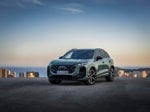
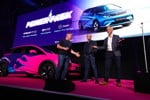

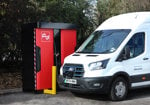
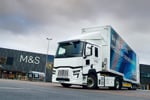
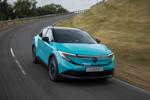




Login to comment
Comments
No comments have been made yet.